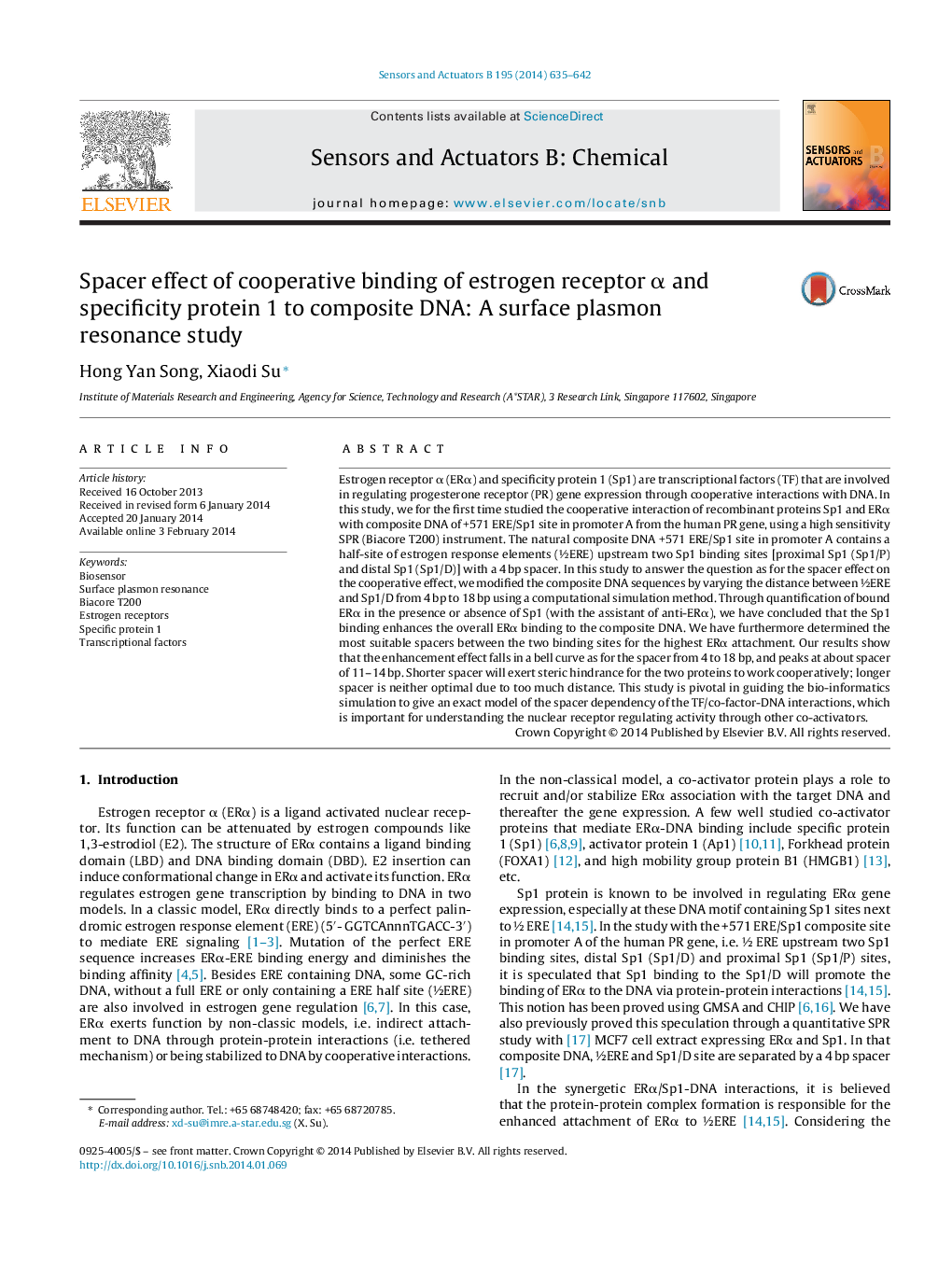| Article ID | Journal | Published Year | Pages | File Type |
|---|---|---|---|---|
| 7147148 | Sensors and Actuators B: Chemical | 2014 | 8 Pages |
Abstract
Estrogen receptor α (ERα) and specificity protein 1 (Sp1) are transcriptional factors (TF) that are involved in regulating progesterone receptor (PR) gene expression through cooperative interactions with DNA. In this study, we for the first time studied the cooperative interaction of recombinant proteins Sp1 and ERα with composite DNA of +571 ERE/Sp1 site in promoter A from the human PR gene, using a high sensitivity SPR (Biacore T200) instrument. The natural composite DNA +571 ERE/Sp1 site in promoter A contains a half-site of estrogen response elements (½ERE) upstream two Sp1 binding sites [proximal Sp1 (Sp1/P) and distal Sp1 (Sp1/D)] with a 4 bp spacer. In this study to answer the question as for the spacer effect on the cooperative effect, we modified the composite DNA sequences by varying the distance between ½ERE and Sp1/D from 4 bp to 18 bp using a computational simulation method. Through quantification of bound ERα in the presence or absence of Sp1 (with the assistant of anti-ERα), we have concluded that the Sp1 binding enhances the overall ERα binding to the composite DNA. We have furthermore determined the most suitable spacers between the two binding sites for the highest ERα attachment. Our results show that the enhancement effect falls in a bell curve as for the spacer from 4 to 18 bp, and peaks at about spacer of 11-14 bp. Shorter spacer will exert steric hindrance for the two proteins to work cooperatively; longer spacer is neither optimal due to too much distance. This study is pivotal in guiding the bio-informatics simulation to give an exact model of the spacer dependency of the TF/co-factor-DNA interactions, which is important for understanding the nuclear receptor regulating activity through other co-activators.
Keywords
Related Topics
Physical Sciences and Engineering
Chemistry
Analytical Chemistry
Authors
Hong Yan Song, Xiaodi Su,
